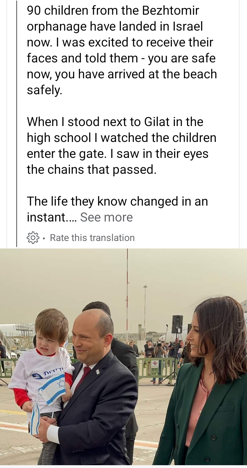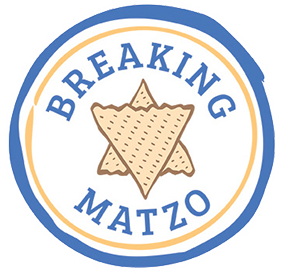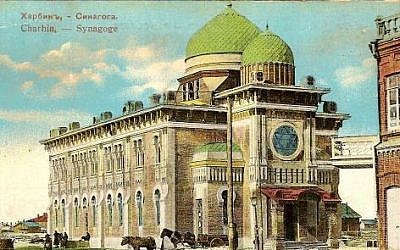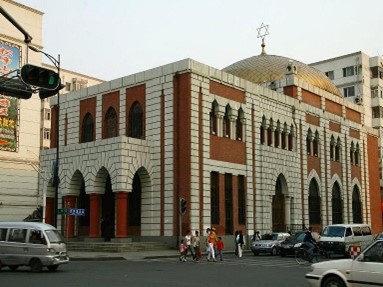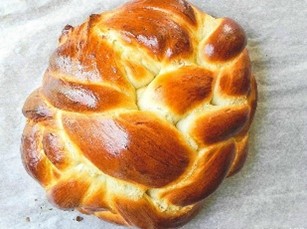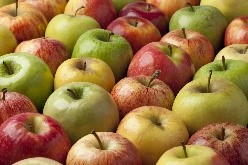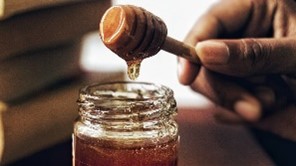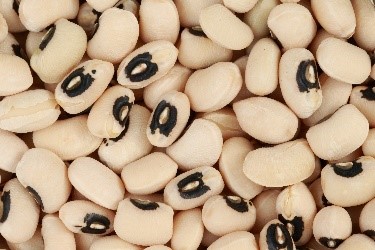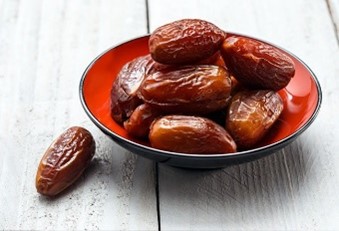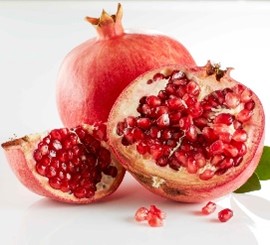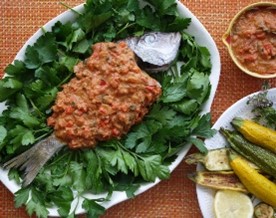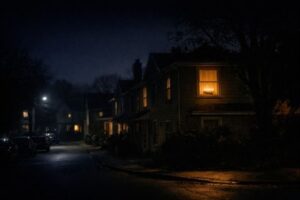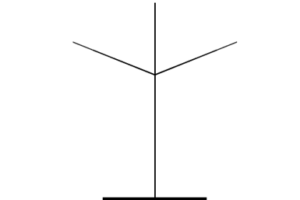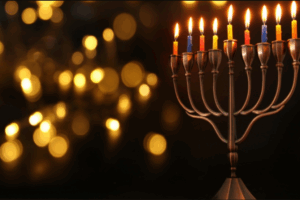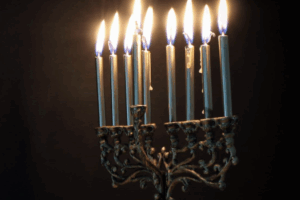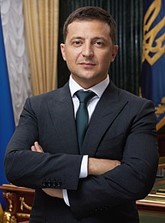
Just like a modern-day Judah Maccabee, President Zelensky has stood strong against this Russian aggression. Despite Russia’s superior fire power, Zelensky and the Ukrainian people remain defiant and are fighting back tooth and nail.
The history of the Jews in Ukrainian has been a long one marred by many tragedies. We know this will not be their final chapter, they will endure and ultimately overcome. Our heart goes out to all those in Ukraine suffering from these acts of Russian violence. We stand with our Ukrainian brothers and sisters in their fight against tyranny.
Ukraine’s Jewish population has had a long and storied history that reaches back centuries.
The earliest Jewish presence in Ukraine can be traced back to the 700s. The Jews came to the region during the reign of the Khazar Kingdom. This is because the Khazars allowed Jews to practice their religion freely. The Khazars were more than just tolerant of Judaism, members of the royal family converted to Judaism. This inspired many regular citizens to adopt Jewish practices or fully convert themselves.
In the mid-900s, Ukraine was taken from the Khazars by the Varangian prince Sviatoslav of the Rurik Dynasty. This led to Ukraine being absorbed into the Kievan Rus. Many of the Rurik leaders were on good terms with the jews, allowing them to hold key financial and administrative positions. When Yaroslav the Wise fortified the city of Kyiv with three grand gates, he named one the Jewish Gate.
In 1253 the Kingdom of Galacia-Volhynia was formed with Ukraine as part of it. The Jewish community continued to thrive under its rule.
In 1394 France expelled its Jewish population. Poland, who controlled Ukraine at the time, welcomed these displaced Jews. Poland offered religious tolerance and economic opportunity. Many of the Jews who moved to Poland settled in Ukraine. In 1492 the Jews were expelled from Spain and Portugal. Many of these Jews followed the lead of the French and moved to Ukraine too.
In 1569 the Union of Lublin established the Polish-Lithuanian Commonwealth. This monarchal federation ruled over a large portion of Europe including Ukraine. Throughout the 1500s large numbers of Jews from all over Polish-Lithuania moved to Ukraine. They mainly came for economic opportunities. In Ukraine, Jews controlled much of the agricultural sector. They were also heavily involved in imports, exports, and the collection of customs and taxes. By the end of the 1500s there were about 45,000 Jews living in Ukraine.
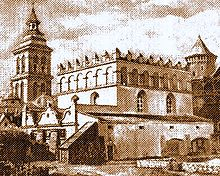
The Golden Rose Synagogue
In 1582 the Golden Rose Synagogue was built in Lviv. It was the oldest synagogue in Ukraine until it was tragically destroyed by Nazis in 1943.
The Jews of Ukraine prospered economically and their numbers swelled. The community grew to 150,000 by 1648. As the size and success of Ukraine’s Jewish community grew, so did the antisemitism they faced. Ukraine’s lower classes saw the Jews as agents of the wealthy who were taking from the poor to enrich themselves. The noblemen and clergy saw the Jews as foreigners and blasphemers.
The Cossacks, a group of East Slavic Orthodox Christians who lived in Ukraine, wanted to be free of Polish rule and govern Ukraine for themselves. In 1648 Bohdan Chmielnicki lead the Cossacks in a campaign to instigate an uprising against the Polish and the Jews. He spread claims that the Poles had sold the Cossacks to the Jews as slaves. In response to these lies, the Cossacks started a bloody campaign against the Jews of Ukraine. From 1648-1649 thousands of Jews were killed in the Chmielnicki Massacre.
Chmielnicki’s rule over Ukraine was short lived. By 1654 he had given up much control of the region in an agreement with the Russian czars. Antisemitic sentiment remained, but this did not deter Jews from living in Ukraine.
During the 1600s and 1700s, Ukraine’s Jewish community helped play a vital role in the economic recovery from the Cossacks’ war. In a stunning reversal, throughout the 1700s, the Cossacks in charge of the Russian annexed area of Ukraine regularly pushed back against the expulsion of Jews. In fact, they actually encouraged Jews be freely allowed to live there due to their positive effect on the economy.
In 1791, the Russians established the Pale Settlement. This was a large region in the Western Russian empire where Jews were allowed permanent residency. Jews were forbidden to live elsewhere in the empire. Most of Ukraine was in the Pale Settlement, so Jews continued to move there.
The brutality and suffering the Jews endured during the Chmielnicki Massacre caused a period of spiritual and cultural change. Ukraine was the birthplace of both Hasidism and its founder Rabbi Israel Ben Eliezer, known as the Baal Shem Tov. Ukraine had a strong Jewish cultural scene, boasting many Yiddish writers, poets, and musicians. Klezmer music was born in Ukraine. In the 1880s, Ukraine was center of the early Zionist movement. The Ukrainian city of Odessa became a major stopping point for Zionists heading to Turkish Palestine.
By 1817 Jews owned 30% of all factories in Ukraine. In 1847 it was estimated that 600,000 Jews were living in Ukraine. In 1897 a Russian census listed almost 2 million Jews living in the region. Jews controlled large proportions of a number of Ukrainian industries including distilling, sawmills, tobacco, and sugar.
The success of Jews in Ukraine continued to cause antisemitic backlash. Ukraine nationalists accused Jews of propagating Russian language and culture and weakening Ukrainian identity. Both the Nationalist and Socialist parties of Ukraine held significant antisemitic views. Ukrainian music, literature, and culture all had an open tradition of hatred towards Jews woven into them.
In 1881-84, a wave of pogroms and violence against Jews broke out and spread through the Ukrainian provinces. This was caused by false rumors that Jews were responsible for the assassination of Russian emperor Alexander II. The next emperor, Alexander III imposed new antisemitic policies and even expelled Jews from some Ukrainian cities.

The Great Choral Synagogue
In 1895 the Great Choral Synagogue of Kyiv was established. It is the oldest synagogue in Ukraine’s capital and is still in use today.
Between World War I and the Russian Revolution, the enforcement of the borders of the Pale Settlement became impossible. In 1917 the Pale Settlement was officially abolished. Soon after, over 300,000 Jews left Ukraine to settle in other parts of the Soviet Union.
In 1918 the Ukrainians created a national council and declared independence of Ukraine from Russia. The Ukrainian nationalist movement decided to make an alliance with the Ukrainian Jews. Jews were given delegates in the national council and the position of Secretariat for Jewish affairs was established. There was a law passed that gave personal autonomy for Jews and other national minorities. A Jewish National Council was formed as well, a democratically elected body that represented the will of the Ukrainian Jewish community. Yiddish was even recognized as a state language. This was a short-lived period of harmony. By 1920 the Red Army had conquered Ukraine and over 100,000 Jews were murdered during the pogroms that followed.
Despite the Pogroms and regional instability in 1927 there were still over 1.5 million Jews living in Ukraine. This number remained relatively the same until World War II.
In 1941, the Germans invaded Ukraine. Significant portions of the Ukrainian population choose to collaborate with their Nazi occupiers in exterminating Ukrainian Jews. The Nazis committed countless atrocities and massacres. The Ukrainian Jews were rounded up into ghettos which would be systematically exterminated. Between the Nazi death squads and their Ukrainian collaborators over a million Ukrainian Jews were killed during the Holocaust. One of the worst of these massacres occurred at Babyn Yar. In just two days in September 1941, the Nazis rounded up and murdered 34,000 Jews in Kyiv, dumping their bodies into a single ditch.
Shamefully, there are no records of any native Ukrainian Nazi collaborators facing justice for their crimes. Not all Ukrainians sided with the Nazis, 2,515 Ukrainians were recognized as “Righteous Among the Nations” for their role in rescuing Jews during the Holocaust.
After World War II, the Soviet Union squashed Jewish religious life. Jews were not allowed to express their faith or harbor Zionist sentiment. The Soviet Union refused to let Jews to emigrate to Israel. Most of the synagogues in Ukraine were forcibly closed. All Jewish religious life was under surveillance by the Soviet secret police. Antisemitic beliefs were still fairly widespread amongst Ukrainians. By 1959 the Jewish population of Ukraine was 840,000.
Starting in the 1960s Ukrainian academics and intellectuals started to empathize with the Jews and fight back against antisemitism. They said that the Ukrainian Jewish community and culture were a unique part of Ukraine that should be embraced in the fight against Soviet control of the region. By 1989 the Jewish population of Ukraine had been reduced to 487,000.
In 1991 Ukraine declared its independence. The majority of Ukrainian Jews voted for this move to independence. The leaders of this new Ukrainian government were willing to work with Ukraine’s Jewish community. That same year the government held an international conference on Ukrainian-Jewish relations. Ukrainian president Leonid Kravchuk acknowledged the Ukrainian’s people role and share of the guilt in the many Ukrainian Jewish deaths during the holocaust.
With the collapse of the Soviet Union, Ukrainian Jews were no longer barred from emigrating to Israel. In the years to come there was a mass exodus of Jews from Ukraine to Israel. In 2005, only 80,000 Jews were still living in Ukraine.
While the Jewish population shrank, Jewish life in Ukraine has been on the rise since the 1990s. There are almost 250 different Jewish organizations operating across 80 cities in Ukraine. Closed synagogues have been reopened, confiscated religious memorabilia has been returned, and new Jewish schools have been opened. There are new Jewish newspapers, community complexes, and theaters.
In 2014, Ukraine was rocked by the violent Revolution of Dignity. The Ukrainian government was overthrown, but this led to Russia annexing Crimea. Around 6,000 Jews moved to Israel to avoid the bloodshed.
In 2016, Vlodymir Groysman became the first Jewish prime minister in Ukraine’s history.
Ukrainian President Petro Poroshenko made regular visits to Israel. In 2019 he and Israeli Prime Minister Benjamin Netanyahu signed a major bilateral free trade agreement between Ukraine and Israel.
Volodymyr Zelensky was a Jewish comedian famous for playing the president of Ukraine on a television show. He turned his celebrity into political clout and ran for the office of president in 2019. Zelensky won the election in a land slide over the incumbent, becoming the first Jewish president of Ukraine. He has been very outspoken about his Jewish identity and heritage. Members of Zelensky’s family were murdered during the Holocaust and others fought the Red Army. Zelensky’s unlikely origins and underdog political victory make him a modern-day David.

President Volodymyr Zelensky
In 2021 it was estimated that around 43,000 Jews were living in Ukraine. Though the community’s size is diminished it is still vibrant and strong.
Despite these gains, a great deal of antisemitism still exists in Ukraine. Long held cultural beliefs in anti-Jewish stereotypes are an issue in Ukraine. Many Ukrainians, including politicians, celebrate Nazi collaborators as anti-communist heroes despite their atrocious war crimes. That said, many Ukrainians are fighting back against entrenched antisemitic beliefs. In February 2022, the Ukrainian parliament passed a law that made antisemitism a criminal offense punishable by fines or up to five years in prison.
On February 24th, 2022, Russia launched a violent military assault against Ukraine. There have been many Ukrainian casualties, substantial infrastructure damage, and hundreds of thousands of Ukrainians were forced to flee the country as refugees. The Russian attacks have even hit the Babyn Yar Holocaust Memorial Center. A monument and museum built on the site of the Nazi atrocities perpetrated there.
Just like a modern-day Judah Maccabee, President Zelensky has stood strong against this Russian aggression. Despite Russia’s superior fire power, Zelensky and the Ukrainian people remain defiant and are fighting back tooth and nail.
The history of the Jews in Ukrainian has been a long one marred by many tragedies. We know this will not be their final chapter, they will endure and ultimately overcome. Our heart goes out to all those in Ukraine suffering from these acts of Russian violence. We stand with our Ukrainian brothers and sisters in their fight against tyranny.
Further Reading:
If you are interested in helping Ukrainian Jewish refugees, you can learn more about doing so here.
You can read more about President Zelensky’s Jewish heritage and incredible bravery here and here.
You can read more about the history of Jews in Ukraine here and here.
Fun Fact: Sholem Aleichem’s “Tevye the Dairyman”, the novel “Fiddler on the Roof” is based on was modeled on the shtetlach in Ukraine where the author grew up.
Fun Fact: Golda Meir, Israel’s 4th Prime Minster was born in Ukraine in 1898.
Rabbi Mendy Uminer has been sharing stories of inspiration and hope emerging from amid the hardship in Ukraine.
This includes making hamantaschen for Purim while under siege
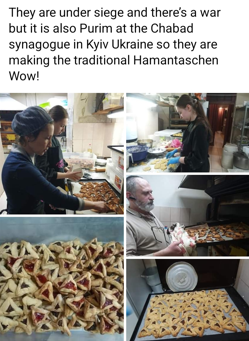
And the uplifting tale of how Israel is relocating Ukrainian Jews to the promised land.
